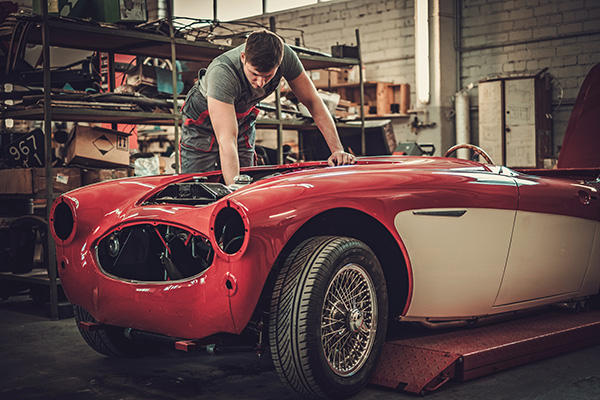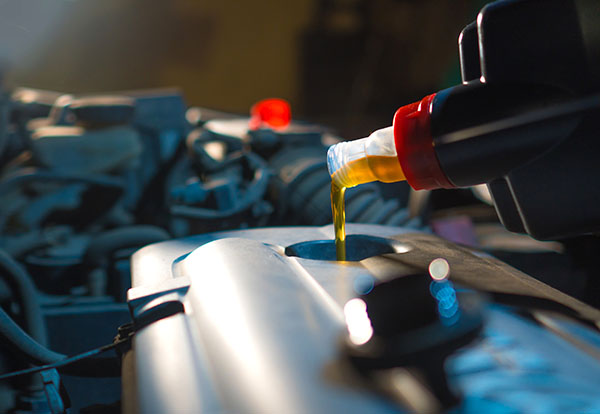Posted on 5/28/2024

Embarking on a classic car restoration journey is akin to breathing new life into automotive history. It's a meticulous process that demands patience, skill, and a profound appreciation for vintage automobiles. Here are the steps to a classic car restoration. Assessment and Planning Before delving into restoration, a thorough assessment of the car's condition is imperative. This involves analyzing every inch to identify rust, damage, and missing parts. With these insights, a comprehensive restoration plan is crafted, outlining the budget, timeline, and specific goals. Disassembly With the restoration plan in hand, the disassembly phase begins. Each component is carefully removed, documented, and organized to ensure seamless reassembly later. Proper labeling and organization prevent any part from being misplaced or overlooked. Bodywork an ... read more
Posted on 4/27/2024

Italy, renowned for its exquisite art, culture, and fashion, has also carved out a distinguished niche in the automotive world with its luxurious and stylish cars. From the sleek lines of a Ferrari to the elegance of a Maserati, Italian automobiles are coveted worldwide for their unparalleled combination of style, performance, and distinctive characteristics. The Essence of Italian Style Italian luxury cars are synonymous with sophistication and refinement, reflecting the country's rich design excellence and craftsmanship heritage. With meticulous attention to detail, Italian automakers infuse their vehicles with artistry and flair, creating masterpieces that blend form and function seamlessly. From a Ferrari's iconic curves to an Alfa Romeo's timeless allure, Italian cars exude an aura of exclusivity and prestige that sets them apart on the road. Engineering Excellence and Driving Dynamics Beyond their striking aesthetics, Italian luxu ... read more
Posted on 3/29/2024
%20-%20Copy%201.jpeg)
Have you ever wondered how much longer you can drive after the fuel warning lamp illuminates on your dashboard? It's a common scenario for many drivers, especially when they're on the road and unsure of the nearest gas station. The Fuel Warning Light The fuel warning light, also known as the low fuel indicator, is designed to alert drivers when the fuel level in the tank drops below a certain threshold. When this lamp illuminates on the dashboard, it indicates that it's time to refuel soon to avoid running out of gas completely. Factors Affecting Driving Range After the Fuel Light Comes On Several factors influence how far you can drive after the fuel light comes on, including: Vehicle Make and Model Different vehicles have varying fuel tank capacities and efficiency levels, affecting their driving range after the fuel light illuminates. Smaller, more fuel-efficient cars may be able to travel farther on a low tank compared to larger ... read more
Posted on 2/29/2024
.jpeg)
Ever wondered how modern cars diagnose and rectify issues with precision? The answer lies in vehicle computer diagnostics, a revolutionary technology that has transformed the automotive industry. Understanding Vehicle Computer Diagnostics At the heart of every modern vehicle lies a complex onboard computer system, often referred to as the Engine Control Unit (ECU) or Electronic Control Module (ECM). This computer monitors and regulates various vehicle components, including engine performance, emissions, transmission, etc. Vehicle computer diagnostics leverage this technology to diagnose and identify potential issues within the vehicle's systems. Benefits of Vehicle Computer Diagnostics Enhanced Accuracy and Precision Unlike traditional manual diagnostics, which rely on subjective observations and guesswork, computer ... read more
Posted on 1/29/2024

"Are you using the right oil for your car's engine?" This question can puzzle many car owners. Engine oil is not just a requirement; it's a crucial choice for your vehicle's longevity and performance. Among the plethora of options, synthetic and semi-synthetic oils stand out. But what sets them apart, and which one is the ideal choice for your ride? Let's find out. What Is The Purpose of Engine Oil? Keeping it simple and easy to follow, this is what we have to say. Engine oil lubricates engine components, minimizes friction, reduces wear, and helps in cooling the engine. Essentially, it keeps the engine's moving parts from grinding against each other and overheating, preventing serious damage. Synthetic Oil Synthetic oil is a man-ma ... read more